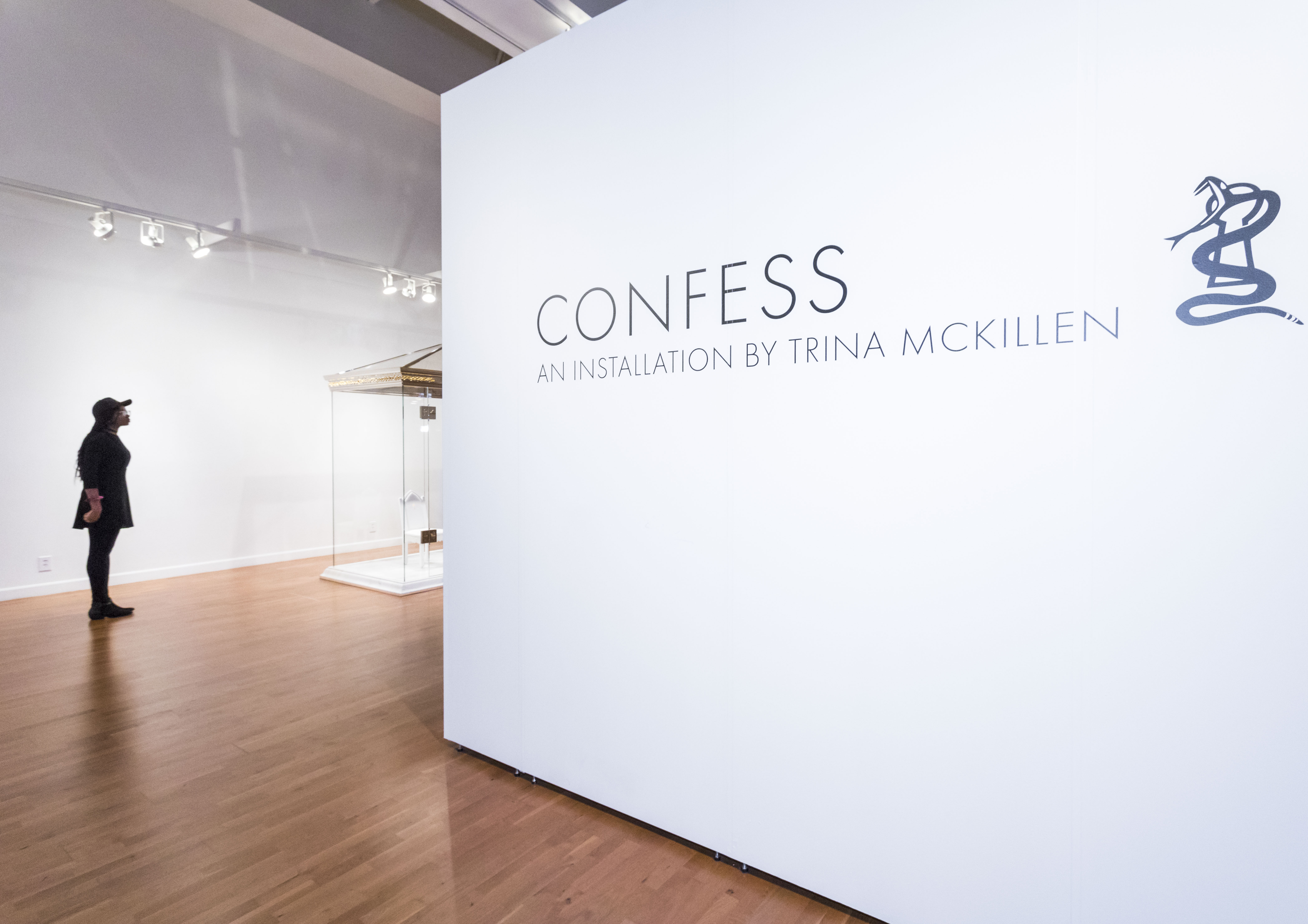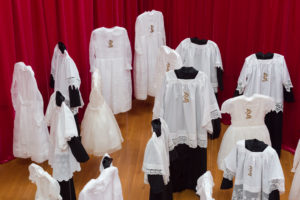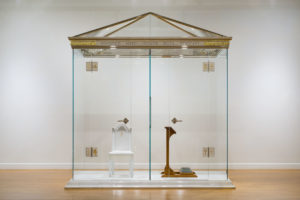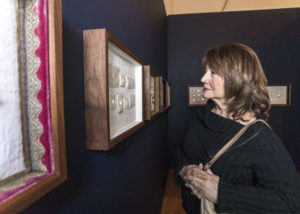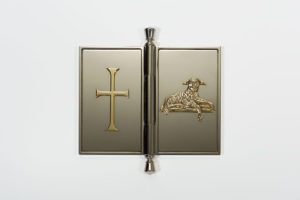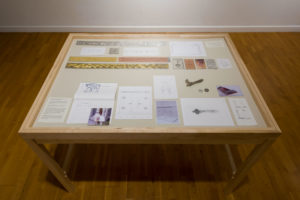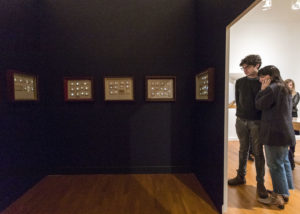Confess, an installation by Trina McKillen, an invitation to transformation.
I could hear the audience gasp with surprise on the Opening Night of Confess at LMU’s Laband Gallery when I pointed to a Church document most did not know existed. The pastoral letter To Artists, promulgated on Easter Sunday of 1999 and authored by Pope John Paul II is truly exceptional. The document marks the first time a Pontiff (who is also an artist) reaches out to the artists of the world to encourage them in their craft. In the letter, John Paul II also speaks to the global community inviting us to take art very seriously because “humanity in every age, and even today, looks to works of art to shed light upon its path and its destiny” (TA 14).
The darkness that envelops the Catholic Church at this moment in history, where the exploitation and victimization of children at the hands of clergy has finally been exposed, desperately needs the type of artists John Paul II envisioned. In this, Trina McKillen’s work in Confess is fulfilling a vital role for the entire community. As John Paul II points out, “even when they explore the darkest depths of the soul or the most unsettling aspects of evil, artists give voice in a way to the universal desire for redemption” (TA 10).
To step into this space, where evil is denounced and conversion is announced, is not easy. Following the example of the Hebrew prophets, the artist calls their community to account before God, and does so out of love for them and full of hope for transformation. How do we engage art that is so theologically complex and such a sign of the living reality that is the Church as Confess? Well, we must cultivate tools to aid us with the encounter. Consequently, what I offer here is a brief guide, which I hope will allow visitors to the exhibition to have a rich experience of this work.
First tool, a travel map.
I suggest the exhibition be visited in a particular sequence that mirrors the movements of our human heart and echoes Catholic church spaces, which McKillen is reclaiming.
Begin at the sacristy, where you will be surrounded. Spend time there, as you can almost hear the noise and bustle of children, or maybe all you encounter is a wounding silence.
Turn around and discover the confessional, circle it, notice the multiple perspectives, read the intricacy of its symbols, allow your heart to open and then to break and to grieve.
Enter the small door into the darkened side chapel, where votives and Stations of the Cross, imagined together as small and comforting, allow you to feel the transcendence of a community defying time. You are now in a place of remembrance where each of our small stories can become part of a transformed big and cosmic story.
Second tool, the hard work this art is doing.
Notice how this art is passing along a religious tradition in all its specificity. This is Catholicism, rich in imagination, opulent in reds and laces and candlelight. Notice the universality of the symbols for the global Church, and feel the tenderness of an artist who as a child understood the Church as “mother” and “refuge.” (Tina McKillen Conversation with the Artist). Figure #1 Detail – The Lamb.
Then be brought into the painful confrontation of how this art is wrestling with the Catholic tradition. Catholicism has come alive here in history in an incandescent way that burns into us. The symbols have been re-imagined to accuse, to demand contrition, to offer endless prayers. The roles have been subverted, and the Church’s leadership is denounced for failing to announce and nurture the Kingdom of God. Figure #2 Detail – McKillen’s notes and sketches.
Finally feel as if you want to kneel, to cry, to pray, to scream, to protest, to be part of a community whose resolute will is to transform a painful reality and grow in hope. The art has now reached its highest calling, it has made possible an experience of awe and wonder for you. It will not leave your memory, it will call you back again and again to contemplate grieving and healing, denouncing and announcing, desolation and hope. Figure #3 – Doorway to the Stations of Hope.
Art is gift, it is generosity and relationship, it interprets our world with us and our hearts to us. The fact that art is made at all is a sign of hope. May your time with Confess be very fruitful. It belongs to the world now.
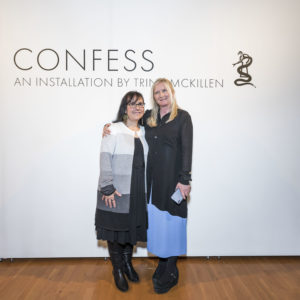 Dr. Cecilia Gonzalez-Andrieu (left) and Trina McKillen (right)
Dr. Cecilia Gonzalez-Andrieu (left) and Trina McKillen (right)
On view at the Laband Art Gallery, Loyola Marymount University through March 23, 2019.
More information- Laband Gallery
Cecilia González-Andrieu, PhD.
Associate Professor of Theology and Theological Aesthetics
Loyola Marymount University
Author of Bridge to Wonder: Art as a Gospel of Beauty
Contributing Writer America Magazine: The Jesuit Review
